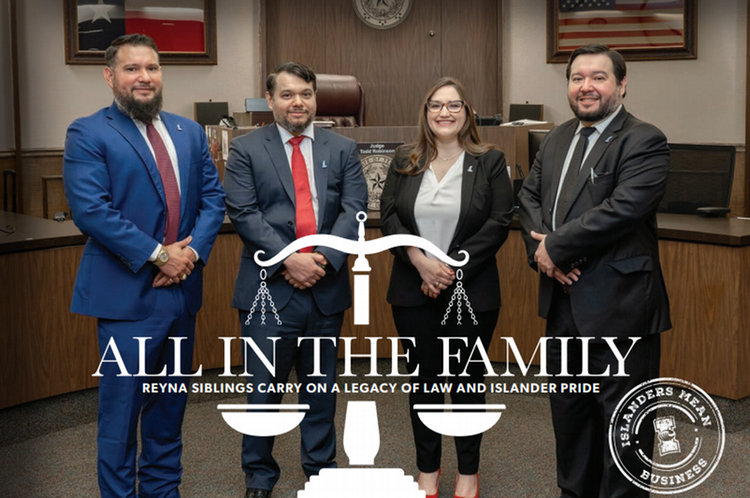Blazing a Trail in Ecuador: TAMU-CC Scholar Charts Path to Active School Culture Through Fulbright Award
CORPUS CHRISTI, Texas — Driven by a lifelong passion for education and health, one Texas A&M University-Corpus Christi faculty member has embarked on a Fulbright journey. One which could help shape the future of physical activity in Ecuadorian schools. And possibly beyond.
Selected for a U.S. Fulbright Scholar Award, Dr. Collin Webster, Interim Chair of Curriculum, Instruction, and Learning Sciences and Associate Professor of Kinesiology, traveled to the University of Cuenca in Ecuador this summer to launch a two-year program aimed at designing a comprehensive, community-driven approach to promoting physical activity in schools in Ecuador’s third-largest city, nestled in the Andes Mountains. Webster is one of only ten TAMU-CC Fulbright Scholars since 1985.
“I’d been interested in applying for a Fulbright for years,” Webster said. “Colleagues who had done it told me what an incredible and rewarding experience it was.”
What followed was a deep dive into the Fulbright’s extensive range of opportunities. Knowing a traditional six-month academic appointment wouldn’t work with his commitments to the Island University, Webster discovered the Fulbright Flex Award, allowing for shorter, spread-out visits over two summers.
“I was looking at countries that offered Flex awards, and Ecuador really clicked,” Webster said. “Their research group at the University of Cuenca is well-respected, and the more I looked, the more it felt like the right fit.”
Encouraged by faculty in Ecuador and a shared vision, Webster’s Fulbright application started taking shape. His proposed project focuses on a “whole-of-school” approach to physical activity, which is an effort to integrate movement — not just in physical education classes, but throughout a school’s entire culture.
This summer, Webster led the first of two stakeholder workshops in Cuenca. The goal was ambitious but clear: gather representatives from every aspect of Cuenca’s school system; teachers, administrators, and parents; and connect them with a team of researchers and medical professionals to come up with a strategy which fits Cuenca’s unique needs.
“This is what the Fulbright is all about: collaboration, cultural exchange, and knowledge building,” he said. “We’re not just talking about getting kids to move more. We’re talking about shaping healthy habits, building stronger communities, and creating systems that support well-being for generations.”
The recently completed listening process yielded a near-Andean sized mountain of data which Webster and his 14-member team will analyze over the following year. He then returns to Cuenca in summer 2026 to present their findings and make recommendations tailored towards the local district’s needs.
“My first visit to Cuenca was a huge success,” Webster said. “When I return next summer, we’ll hold a separate workshop, with children, to refine the causal loop diagrams and develop recommendations for future research, policy, and practice.”
In 2024, Webster attended a conference in Bradford, England, which focused on increasing physical activity programs across school systems. There he learned about, and was inspired by, a whole-of-school method, like the one he’s proposing in Ecuador, used in Finnish schools.
“We’re not trying to copy and paste Finland onto Ecuador,” Webster said. “But we can learn from what’s worked elsewhere. Nuggets of wisdom that might apply here, too.”
As is the case with most great journeys, the road ahead had its own set of challenges. Organizing a major stakeholder workshop during the summer break, when schools are closed and schedules scattered proved especially difficult. Ahead of his trip, Webster relied heavily on existing networks at the University of Cuenca. In all, 43 people representing various local groups connected to schools — teachers, administrators, parents, community partners, and policymakers — attended the workshop.
During the workshop, researchers used group model building to generate causal loop diagrams depicting school and community-based causes and consequences of children’s physical inactivity in Cuenca as well as the relationships between those causes and consequences.
“We’re not trying to drop in with a prepackaged program,” Webster explained. “We want something that’s created by and for the community. It needs to reflect their context, values, and goals.”
Long term, the hope is that this grassroots approach in Cuenca might someday offer insights which can be used in similar efforts elsewhere. Maybe even in the U.S., where whole-school activity programs are rare and difficult to implement.
Students who have worked with Webster say that if anyone can accomplish this task, it’s him.
“Dr. Webster is incredibly dedicated, patient, and compassionate,” said Katarina Behrens ’25, a senior studying kinesiology. “He doesn’t just lecture — he engages. He asks thoughtful questions, invites dialogue, and makes even the most complex topics feel accessible. You can tell he’s not just there to teach; he’s there to make a difference.”
The TAMU-CC Office of the Provost will be hosting a Lunch and Learn on Wednesday, Oct. 1, 11:30 a.m., where Webster will talk about the Fulbright application process and the impact of his research award. The event is free and open to all TAMU-CC faculty, though RSVP is needed. More information will be released in September.

![FullSizeR[1]](https://photos.tamucc.edu/Web-Stories/2025/Fall-2025/Collin-Webster-Fulbright-Trip-to-Cuenca-Ecuador/i-tZ3n9Xb/0/Lw3vMGbHqHRJsHmnJdXPWWJXMVsWq6JkjF7qHKwHs/XL/FullSizeR%5B1%5D-XL.jpg)






















